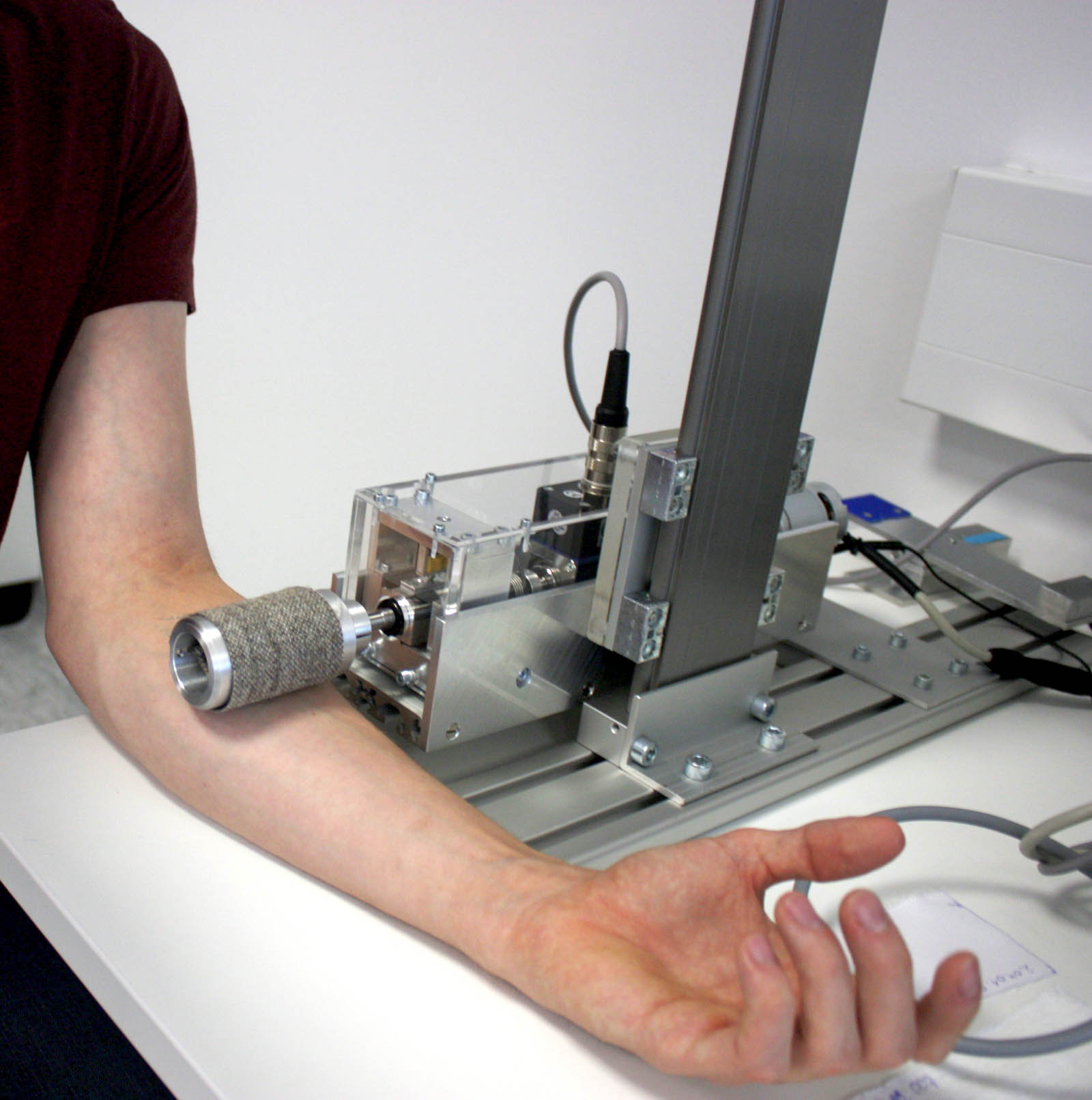
The science of touch

HUMskin, used to study human-textile interactions, has many of the same physiological properties as human skin.
A silky blouse, a cozy sweater, Egyptian cotton sheets—they all feel good to wear or wrap yourself in. There is a science behind how different textiles feel on the body. Now, a European research project called Touché is gaining a better understanding of fabric feel and textile touch, in order to advance textile innovation.
A joint German-Belgian project, Touché is studying the interaction between human skin and textiles, and how textiles are perceived. The German research team at the Hohenstein Institute in Boennigheim, Germany, is focusing on “fabric feel”—how clothing feels on the body. At the same time, project partners from Belgium’s University and University College Ghent are studying whether “textile touch,” or the way textiles feel when actively touched, can be scientifically measured.

SOFIA 2, an electromechanical textile applicator, can apply textile samples to different parts of the body at different speeds and pressures. Photos: ©Hohenstein Institute
The research project will look at these combined efforts in order to understand how stimuli differ between the experiences of passively wearing clothing and actively touching fabric. The goal is to identify the textile parameters that affect human perception, enabling technical predictions along the textile production chain, and understanding how the user will experience the textiles.
To conduct their research, scientists at Hohenstein have developed HUMskin, a synthetic skin with many of the same physiological properties as human skin and the same surface profile as the outermost layer. They will use HUMskin to simulate wearing experiences and measure the effects of different types of friction on the skin to understand the materials and values that can be expected for friction processes, and how textiles are experienced on the skin.










